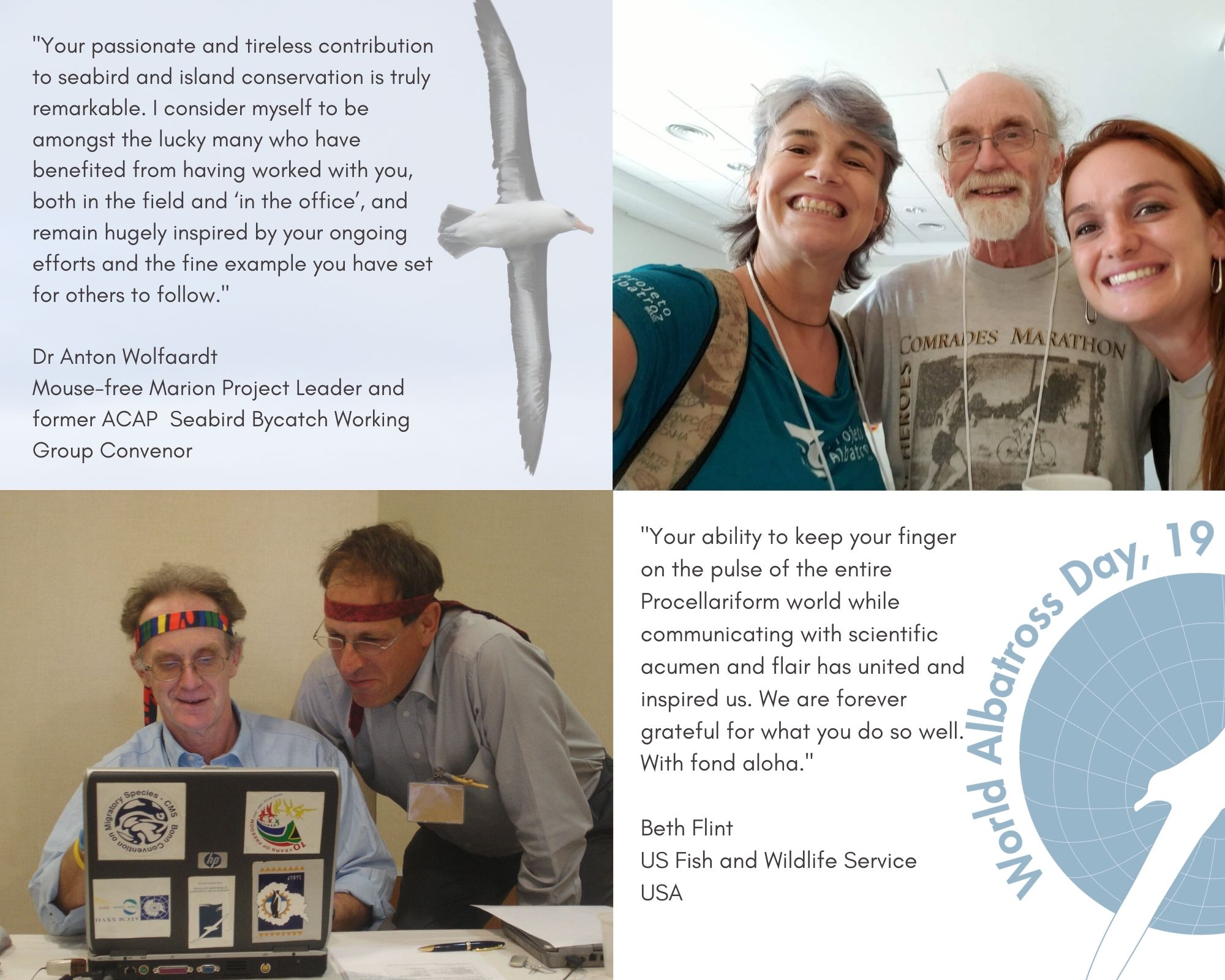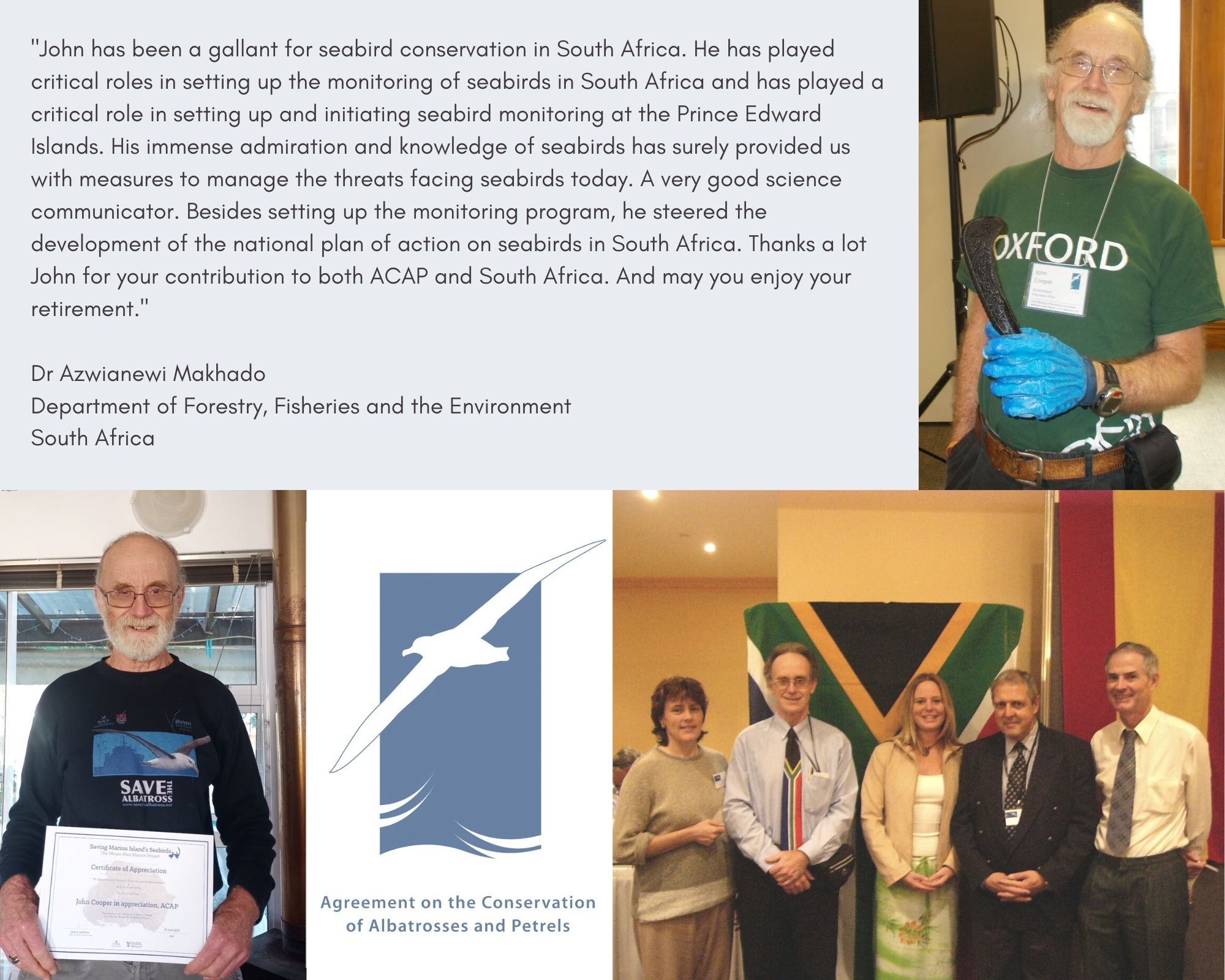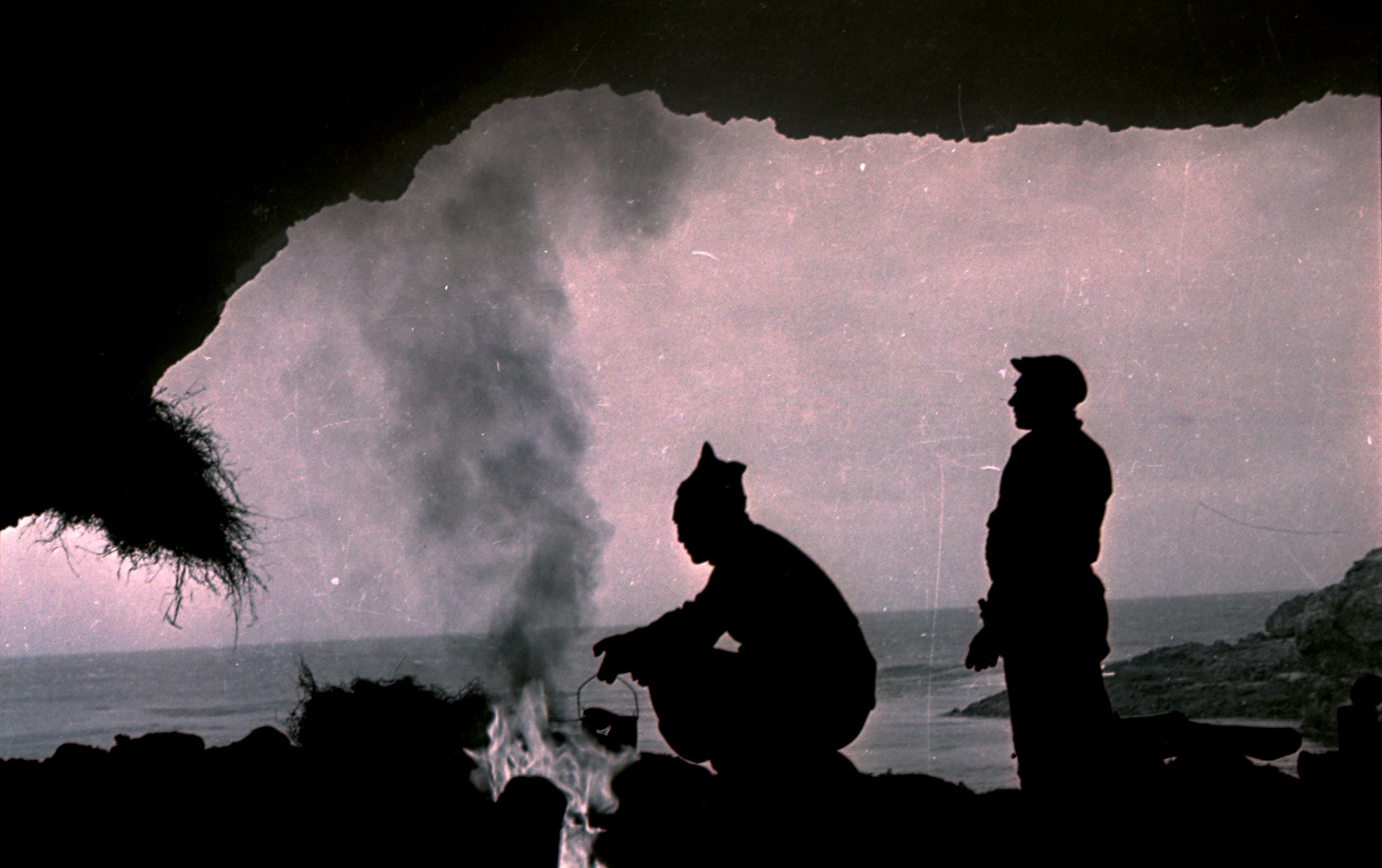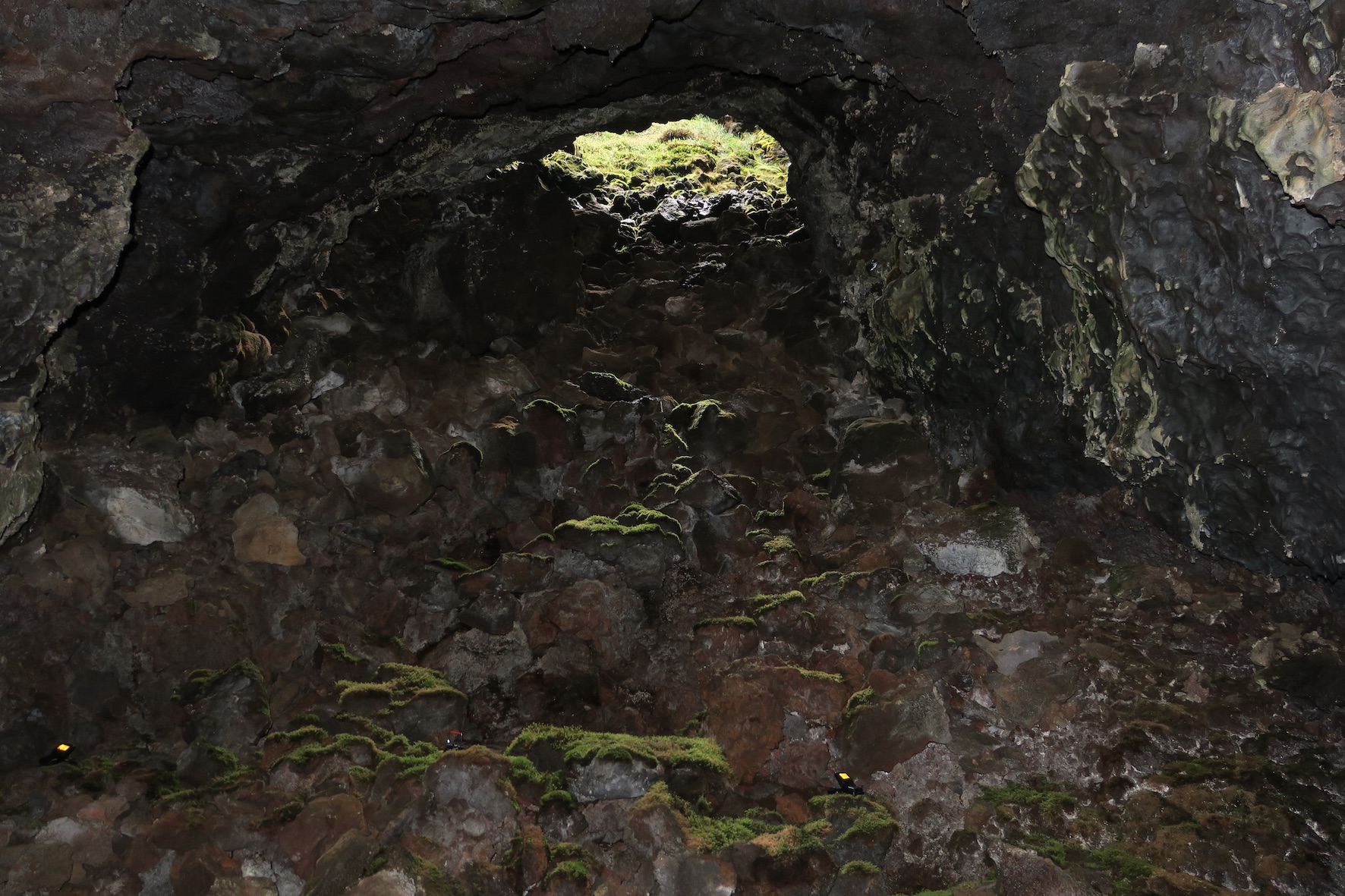 Photographs clockwise from top left; John, Working Group meetings, Hermanus, South Africa, 2008; John, at home in South Africa, 2022; photograph by Ruth Cooper
Photographs clockwise from top left; John, Working Group meetings, Hermanus, South Africa, 2008; John, at home in South Africa, 2022; photograph by Ruth Cooper
Wishing John Cooper the very best on his retirement: photos of John over the years and quotes from those who have had the pleasure of working with him (photographer unknown unless acknowledged)
With over 20 years of involvement with ACAP, contemplating retirement from an organisation in which he played a key role in its genesis has not been easy for John Cooper. John’s long-term involvement with ACAP has seen him hold a number of roles over the years: he played an instrumental part in ACAP’s formation, he was Vice Chair of the ACAP Advisory Committee from 2005 - 2007, and has, for the last 17 years been ACAP’s honorary Information Officer. As honorary Information Officer, John has kept followers of ACAP’s website and Facebook page up to date with the latest research articles, newly released books, artworks or poems. From the serious to the quirky, John has the knack for finding all albatross and petrel related news.
John has been a crucial figure in both creating and communicating key ACAP initiatives including, the ACAP species summaries and breeding sites series, infographics and photo essays, starting and managing the ACAP Facebook page to its now 6000 plus followers, and writing thousands of posts for ACAP’s latest news on the website. His most recent feat has been the initiation and development of World Albatross Day. This celebratory day, marked annually on 19 June, is a chance to shine a spotlight on albatrosses and grow awareness of the threats and uncertain future they face as a species, as well as the solutions available to reduce risks to these birds. World Albatross Day has been embraced by a global community who have a shared passion for this magnificent bird. John should be truly proud of all he has achieved in his efforts to improve the conservation status of the world’s albatrosses and petrels.
 Photographs clockwise from bottom left: John (left) and ACAP TWG Convenor and former Advisory Committee Chair and Vice-chair, Mark Tasker at AC2, Brasilia, Brazil, 2006; ACAP AC Vice-chair Tatiana Neves (left), John (centre) and PaCSWG Co-convenor, Patricia Serafini (right) at AC11, Florianopolis, Brazil, 2019.
Photographs clockwise from bottom left: John (left) and ACAP TWG Convenor and former Advisory Committee Chair and Vice-chair, Mark Tasker at AC2, Brasilia, Brazil, 2006; ACAP AC Vice-chair Tatiana Neves (left), John (centre) and PaCSWG Co-convenor, Patricia Serafini (right) at AC11, Florianopolis, Brazil, 2019.
Upon hearing of John’s retirement, tributes flowed in from those that have worked with him over the course of his career. What is immediately apparent is how recognised he is for his boundless energy, his deep affection for seabirds, and his unfaltering commitment to the conservation of their populations across the globe. And that is certainly a feeling echoed by ACAP, “John is a wonderful colleague and friend. His dedication to the conservation of albatrosses and petrels is an example to us all. It has been an absolute privilege to work with him over the past three and a half years." Dr Christine Bogle, ACAP Executive Secretary.
 Photographs clockwise from bottom left: John holding his ACAP retirement gift (sponsorship of three hectares towards the eradication of Marion Island’s invasive mice population); photograph by Ruth Cooper; John, AC10, Wellington, New Zeland, 2017; John (2nd from left) with the South African delegation, MoP1, Hobart, Australia, 2004
Photographs clockwise from bottom left: John holding his ACAP retirement gift (sponsorship of three hectares towards the eradication of Marion Island’s invasive mice population); photograph by Ruth Cooper; John, AC10, Wellington, New Zeland, 2017; John (2nd from left) with the South African delegation, MoP1, Hobart, Australia, 2004
John has opted for a slow release into retirement, meaning we will have time to ease into the new arrangement here at ACAP. He has taken World Albatross Day coordination under his wing and will continue to promote this growing event for the foreseeable future. Happily for ACAP he has also agreed to contribute monthly guest posts to be featured across ACAP’s social media pages and the website, and will still be writing occasional news posts under his new moniker, News Correspondent. And so with heartfelt thanks for your dedication, enthusiasm and energy, ACAP wishes you the very best John. You will be missed by all here at ACAP – even in the guise of a ‘soft retirement’. Enjoy!
Posted 9 August, 2022

 English
English  Français
Français  Español
Español 





 Entrance to a lava tunnel on the lower slopes of Fred’s Hill; photograph by Ian Meiklejohn
Entrance to a lava tunnel on the lower slopes of Fred’s Hill; photograph by Ian Meiklejohn
